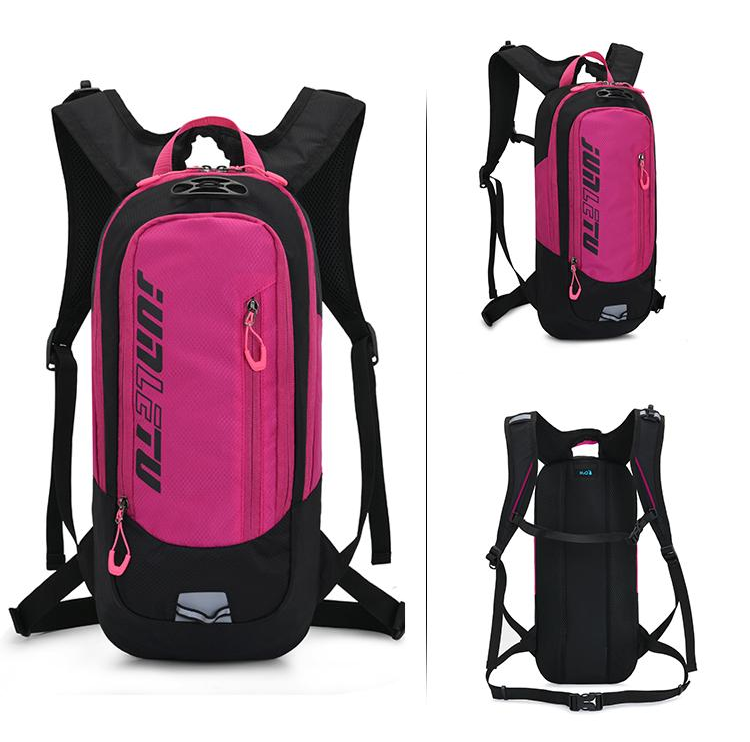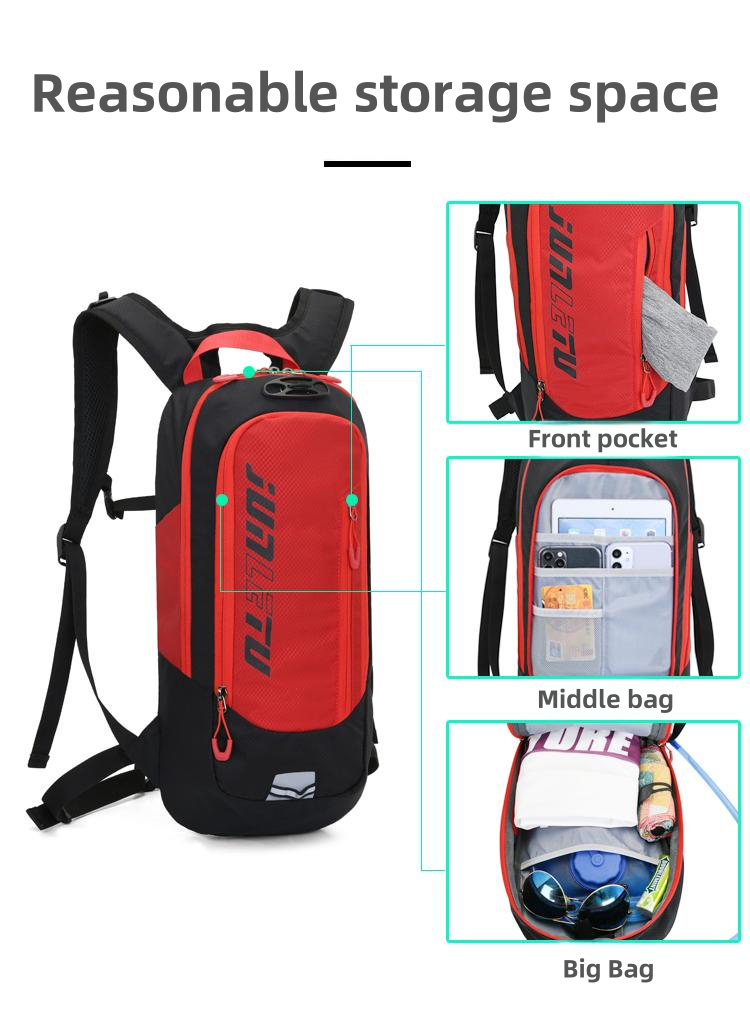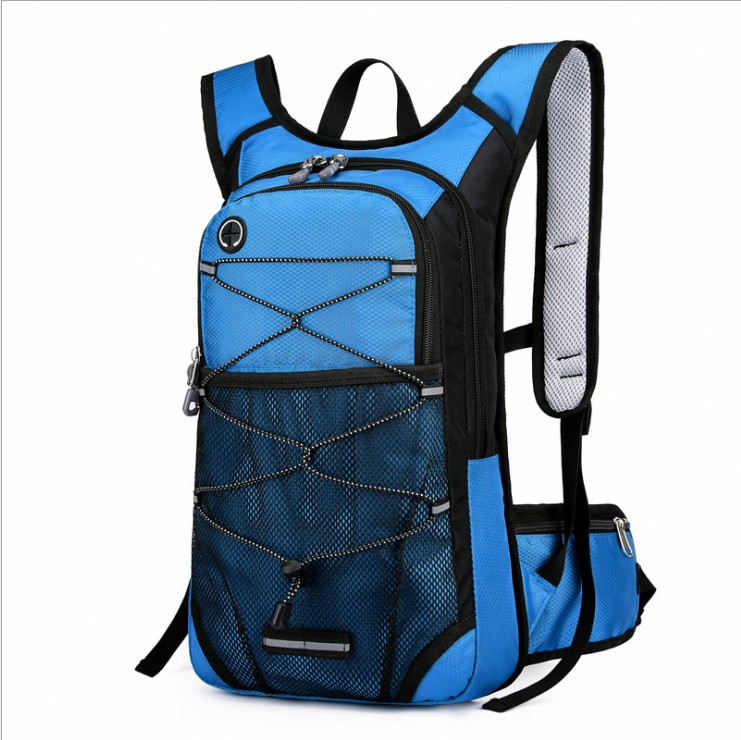As an avid hiker and outdoor gear enthusiast with over a decade of experience testing equipment in the wild, I’ve carried water bladders through rugged mountains, dense forests, and even urban treks. One question I hear all the time from fellow adventurers is whether a water bladder—those flexible, lightweight hydration reservoirs—can withstand the rough-and-tumble life inside a backpack. It’s a valid concern. Nobody wants a soggy pack or, worse, to be stranded without water in the middle of nowhere. After countless trails and a few mishaps of my own, I’ve learned what makes a water bladder reliable and how to keep it from breaking. In this article, I’ll share my insights, practical tips, and real-world experience to help you use a water bladder with confidence, whether you’re hiking, biking, or just commuting.
Understanding Water Bladders and Their Role
For the uninitiated, a water bladder (also called a hydration reservoir) is a flexible, sealed bag made of durable plastic, typically polyurethane or polyethylene, designed to hold water. It’s paired with a drinking tube and a bite valve, allowing you to sip water on the go without stopping to open a bottle. Water bladders are a staple for outdoor activities like hiking, cycling, and camping because they’re lightweight, hold large volumes (1–3 liters), and fit neatly inside backpacks.
But here’s the catch: unlike rigid water bottles, bladders are soft and seemingly vulnerable. When you’re tossing your backpack around, cramming it with gear, or accidentally dropping it on a rocky trail, it’s natural to worry about the bladder bursting and soaking your stuff. So, let’s dive into the factors that determine whether a water bladder will hold up and how you can minimize the risk of leaks or breaks.

Why Worry About Water Bladders Breaking?
When I started using water bladders years ago, I was skeptical too. My first hike with one was a nerve-wracking experience—I kept imagining the bladder popping under the weight of my gear, leaving my sleeping bag drenched. Thankfully, that didn’t happen, but I’ve since seen friends deal with leaks from poorly chosen or mishandled bladders. The fear of a water bladder breaking stems from a few common scenarios:
Pressure from gear: Sharp or heavy items in your backpack pressing against the bladder.
Rough handling: Dropping or tossing your backpack during a hike or climb.
Material wear: Over time, the bladder’s material might weaken, especially if not properly maintained.
Extreme conditions: Freezing temperatures or intense heat affecting the bladder’s integrity.
The good news? With the right bladder, proper packing, and a bit of care, the risk of a break is minimal. Let’s break it down.
Are Water Bladders Durable Enough?
Modern water bladders are engineered for toughness. Most are made from thermoplastic polyurethane (TPU) or similar materials, which are flexible yet strong, with high resistance to punctures and tears. According to a study on material durability, TPU is widely used in outdoor gear because it balances flexibility with resilience, even under stress. I’ve put bladders through grueling tests—stuffing them into overstuffed backpacks, hiking in subzero temps, and even accidentally dropping my pack off a boulder—and most held up without a hitch.
That said, not all bladders are created equal. Lower-quality options or older models might use thinner materials that are more prone to failure. Here’s what I look for when choosing a durable water bladder:
Material thickness: Higher-end bladders use thicker TPU (0.3–0.4 mm), which resists punctures better than thinner alternatives.
Seam welding: Look for radio-frequency (RF) welded seams, which are stronger than glued or stitched seams.
BPA-free certification: Ensures the material is food-safe and less likely to degrade over time.
Puncture resistance: Some bladders are tested for puncture resistance, with ratings provided by manufacturers.
In my experience, a well-made bladder can withstand the pressures of a backpack if you follow a few best practices. Let’s explore those next.

How to Prevent Your Water Bladder from Breaking
Based on years of trial and error, I’ve honed a system for keeping water bladders intact. Here are my top tips:
1. Choose a Backpack with a Dedicated Hydration Sleeve
Most hiking and cycling backpacks come with a hydration sleeve—a padded compartment designed to hold a water bladder securely. This sleeve keeps the bladder separate from other gear, reducing the risk of punctures from sharp items like trekking poles or multitools. If your backpack lacks a sleeve, consider a padded bladder pouch for extra protection.
2. Pack Smart
Avoid placing sharp or heavy items directly against the bladder. I always pack soft items like clothing or a sleeping bag around the bladder to act as a buffer. For example, on a recent trek, I nestled my bladder between my fleece jacket and a lightweight tarp, which cushioned it perfectly.
3. Don’t Overfill
Overfilling a bladder increases internal pressure, making it more likely to burst under external stress. Most bladders have a fill line—stick to it. I learned this the hard way when I overfilled a 2-liter bladder and noticed a small seam leak after a bumpy bike ride. Now, I fill to about 80–90% capacity to leave some wiggle room.
4. Check for Wear and Tear
Before each trip, inspect your bladder for signs of wear, like cracks, discoloration, or weak seams. I once ignored a slightly cloudy bladder, thinking it was fine, only to find a slow leak mid-hike. Regular checks can save you from disaster.
5. Clean and Store Properly
After every use, clean your bladder thoroughly with warm water and a mild dish soap, then dry it completely to prevent mold or material degradation. Store it flat or loosely rolled in a cool, dry place. I’ve found that Backpacker’s cleaning tips work well for keeping bladders in top shape.
6. Use a Protective Cover
Some bladders come with optional protective sleeves or covers. These add an extra layer of defense against punctures and abrasions. If your bladder doesn’t have one, a DIY solution like wrapping it in a soft cloth works in a pinch.
Comparing Water Bladders to Other Hydration Options
To give you a clearer picture of whether a water bladder is the right choice, I’ve put together a comparison table based on my experience and industry insights. This compares water bladders to other common hydration options for outdoor activities:
|
Hydration Option |
Capacity |
Weight |
Durability |
Ease of Use |
Cost (USD) |
Best For |
|---|---|---|---|---|---|---|
|
Water Bladder |
1–3 liters |
Lightweight (4–8 oz) |
Moderate to High |
Easy sipping via tube |
$20–$50 |
Hiking, cycling, long treks |
|
Hard Water Bottle |
0.5–1 liter |
Moderate (8–16 oz) |
Very High |
Requires stopping to drink |
$10–$30 |
Short hikes, daily use |
|
Collapsible Bottle |
0.5–2 liters |
Lightweight (2–6 oz) |
Moderate |
Moderate (cap can be tricky) |
$15–$35 |
Ultralight hiking, travel |
|
Canteen |
1–2 liters |
Heavy (12–20 oz) |
Very High |
Clunky to drink from |
$15–$40 |
Rugged conditions, military use |
Key Takeaway: Water bladders excel for hands-free hydration and high capacity, making them ideal for long outdoor activities. However, they require more care than hard bottles or canteens to prevent damage.
Real-World Scenarios: Can a Water Bladder Survive?
To put your mind at ease, let’s walk through a few common scenarios where water bladders might face stress, based on my own adventures:
Hiking with a Full Pack: On a 15-mile hike in the Rockies, my 50-liter backpack was loaded with 20 pounds of gear, including a 2-liter water bladder. I tossed the pack around at rest stops and even dropped it once on a rocky path. The bladder, secured in its hydration sleeve and cushioned by clothes, held up perfectly—no leaks, no issues.
Cycling on Rough Trails: During a mountain biking trip, my backpack took a beating as I navigated bumpy terrain. The bladder was pressed against my repair kit and snacks, but its thick TPU material and RF-welded seams kept it intact.
Freezing Temperatures: I’ve used bladders in subzero conditions during winter hikes. To prevent freezing, I blew air back into the tube after each sip and kept the bladder close to my body for warmth. No cracks or leaks, even at -10°C.
These experiences taught me that while water bladders aren’t indestructible, they’re tougher than they look when handled with care.

What to Do If Your Water Bladder Does Break
Despite your best efforts, accidents happen. I’ve had a couple of bladders spring leaks over the years, usually due to user error or wear. Here’s how to handle it:
In the Field: If you notice a leak mid-trip, empty the bladder into a backup container (I always carry a collapsible bottle as a failsafe). Wrap the bladder in a plastic bag to contain the mess and continue your trip. Small punctures can sometimes be patched with duct tape as a temporary fix.
At Home: Many bladders come with repair kits for small tears. For larger damage, it’s often better to replace the bladder, as patches can weaken over time. Check the manufacturer’s warranty—some offer replacements for defects.
Prevention: Invest in a high-quality bladder from the start. In my experience, spending a bit more on a reputable model saves headaches down the line.
Choosing the Right Water Bladder
Not all water bladders are built the same, and choosing a durable one is key to avoiding breaks. Here are my criteria for picking a reliable bladder:
Material: Opt for TPU or polyethylene with a thickness of at least 0.3 mm.
Closure Type: Screw-cap or slider closures are more secure than clip-on types, which can pop open under pressure.
Tube and Valve Quality: A reinforced drinking tube and a leak-proof bite valve are non-negotiable. I’ve had cheap valves leak at the worst moments.
Capacity: Choose based on your activity. A 2-liter bladder is versatile for most day hikes, while 3 liters suits multi-day treks.
Pro Tip: Check reviews on sites like REI for user feedback on specific models. I’ve found that community insights often reveal real-world durability better than manufacturer claims.
A Personal Story: The Time I Almost Lost Faith in Bladders
On a three-day trek in Yosemite a few years back, I made a rookie mistake. I tossed my backpack into the trunk of my car without securing the water bladder, which was pressed against a sharp-edged cooking pot. By the time I reached the trailhead, my pack was soaked. The culprit? A tiny puncture from the pot’s edge. It was a frustrating lesson, but it taught me to always double-check my packing and invest in a bladder with a dedicated sleeve. Since then, I’ve had zero issues, even on tougher trips.

Common Questions About Water Bladders in Backpacks
To wrap up, here are answers to some frequent questions I get from hikers and outdoor enthusiasts about water bladders:
Q1: Can a water bladder burst from being overfilled?
A: It’s unlikely to burst, but overfilling can stress the seams, leading to small leaks. Stick to the recommended fill line, usually 80–90% of capacity, to reduce pressure.
Q2: Are water bladders safe in extreme temperatures?
A: Most bladders handle temperatures from -20°C to 50°C, but check the manufacturer’s specs. In freezing conditions, insulate the tube and blow water back into the bladder after drinking to prevent ice buildup.
Q3: What if I don’t have a hydration sleeve in my backpack?
A: You can still use a bladder, but pack it carefully. Wrap it in soft items like clothes and avoid sharp objects nearby. A padded bladder pouch is a great investment for extra protection.
Q4: How often should I replace my water bladder?
A: With proper care, a quality bladder can last 3–5 years. Replace it if you notice cracks, discoloration, or persistent leaks. Regular cleaning extends its lifespan.
Q5: Can I carry a water bladder with other liquids?
A: Stick to water to avoid damaging the bladder or contaminating the material. Sugary drinks or alcohol can degrade the plastic and make cleaning a nightmare.
Wrapping Up
After years of hauling water bladders through every kind of terrain, I can confidently say they’re a reliable choice for staying hydrated on the go—if you treat them right. A well-chosen bladder, packed thoughtfully and maintained properly, is unlikely to break, even in a rugged backpack. By following the tips I’ve shared—choosing a durable model, packing smart, and checking for wear—you can hit the trail with peace of mind, knowing your water supply is secure.
Whether you’re a weekend hiker or a seasoned adventurer, a water bladder can be a game-changer for convenience and comfort. Got more questions about hydration gear or outdoor prep? Feel free to drop them below, and I’ll share what I’ve learned from the trail. Happy exploring, and may your backpack stay dry!